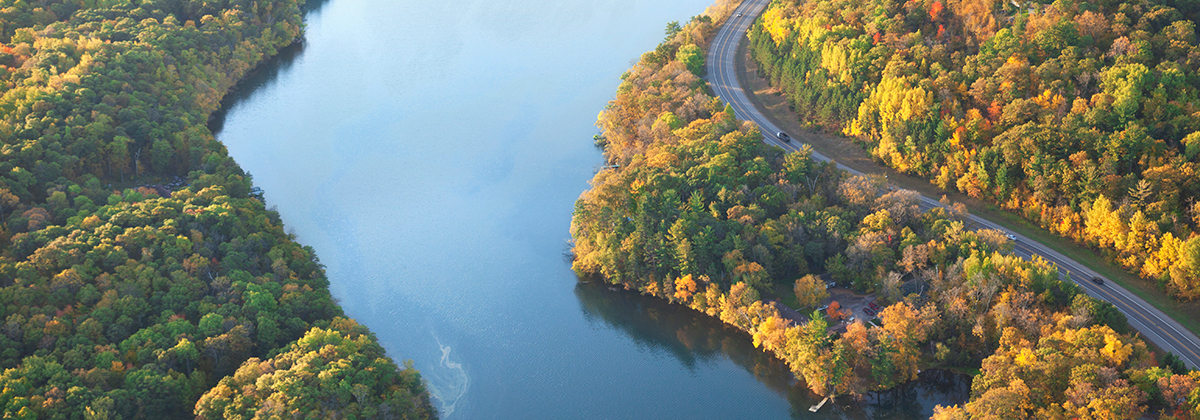- Northern Illinois Center for Community Sustainability
- Current Research
- Geo-STEM Learning Ecosystem

Geo-STEM Learning Ecosystem
Building a Sustainable Geo-STEM Learning Ecosystem for Illinois Teachers
Nicole LaDue
NIU Associate Professor of Geology and Environmental Geosciences
In 2021, Associate Professor Nicole LaDue, along with Praveen Kumar, professor of civil and environmental engineering at University of Illinois Urbana-Champaign and Sarah Fisher, director of environmental education at Lewis and Clark Community College, received an Illinois Innovation Network seed grant to build a network of high school earth science teachers throughout Illinois. The educator network will provide teacher professional development, help teachers build connections with one another and the scientific community, and support teachers to improve earth science education in the state. Pre- and post-surveys and in-depth interviews with earth science teachers will help the team identify the teachers’ needs and their current level of support, connection and mastery of scientific topics.
The IIN project was designed and developed by NIU Ph.D. student Cheryl Manning, an experienced high school teacher who has taught earth sciences for more than 25 years. Manning will be teaching educators how to use hands-on earth science activities (such as soil mapping of the surrounding area) to help students better understand the relevance of earth science and the environmental issues affecting their communities and the larger world. She’ll also gather and analyze data to understand how creating Geo-STEM learning ecosystems – connecting teachers to the geoscience research happening in their own communities – impacts student learning.
The team will leverage the work Professor Kumar and his extensive team of collaborators are doing with Critical Zone Observatories in the Midwest to introduce Illinois teachers to cutting-edge earth science and involve teachers and students in hands-on research. The critical zone is an area surrounding the earth that extends from the top of the bedrock to the top of the plant canopy. It’s crucial for supporting life on earth, including human life, and is where critical interfaces occur – interactions among water, sediment, carbon and nutrients, and between these materials and the underlying bedrock. Critical Zone Research is interdisciplinary, with ecologists, soil scientists, hydrologists, hydrogeologists and geologists working together to understand and manage landscapes sustainably. The Midwest is an important location for Critical Zone Research because it helps scientists understand critical zone interactions in an intensively managed landscape – in other words, a landscape that has been heavily influenced by human land use, particularly agriculture.
This project aims to help Illinois educators better fulfill the Next Generation Science Standards – a set of research-based, up-to-date science standards that have been adopted by Illinois as well as many other states. Countering the stereotype that teaching geology is merely "rocks in boxes," the team (although they do love rocks) hopes to promote a holistic, cycles- and process-focused approach to teaching earth science that helps students understand and address the pressing problems facing humanity in the 21st century.
-
Current Research
-
Basil Flavor
-
Cancer Mortality Index
-
Caregiver Stakeholder Registry
-
Forever Chemicals
-
Geo-STEM Learning Ecosystem
-
Laboratory-scale Biomass Containers
-
Municipal Solid Waste Framework
-
Prairie Restoration
-
Specialty Crop Production
-
Sustaining Illinois through Collaborative Governance
-
Urban-regional Modeling
-
Water Quality
-
Basil Flavor
Contact Us
Matthew Deitch, Ph.D.
Director, Northern Illinois Center for Community Sustainability
mdeitch@niu.edu